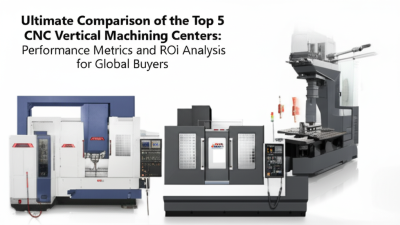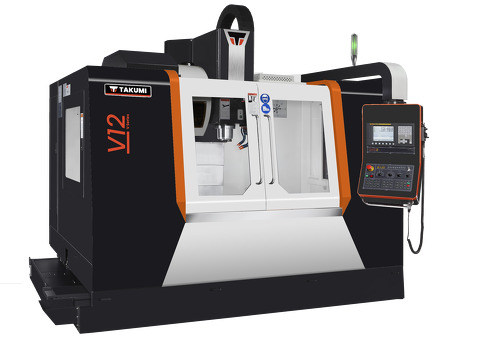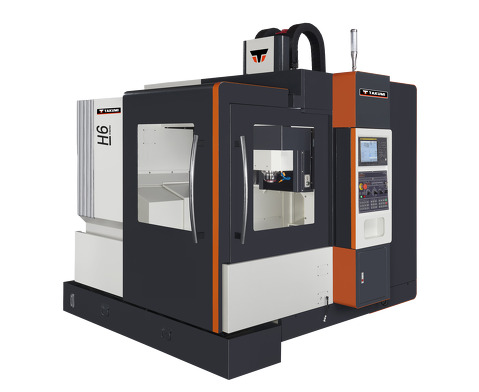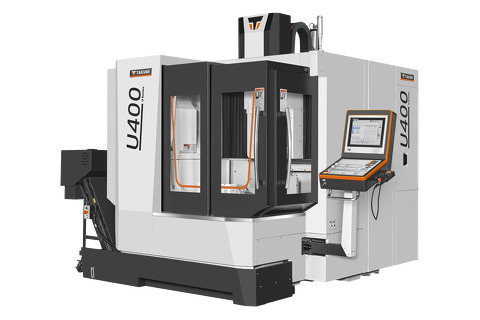- Machining center
- Control
- News & Media
- Company
- Blog
- Contact
Ultimate Comparison of the Top 5 CNC Vertical Machining Centers: Performance Metrics and ROI Analysis for Global Buyers
As the manufacturing landscape evolves towards Industry 4.0, the demand for precision and efficiency has propelled the CNC vertical machining center to the forefront of modern machining technology. According to a recent report by MarketsandMarkets, the CNC machine market is projected to reach USD 117.1 billion by 2026, growing at a CAGR of 6.5% during the forecast period. This growth is driven by the need for high-precision parts and the influence of automation in production processes. For global buyers, selecting the right CNC vertical machining center is crucial not just for operational efficiency but also for maximizing return on investment (ROI). The performance metrics associated with these machines—spindle speed, tool changing time, and accuracy—differ significantly among models.

This blog aims to provide an ultimate comparison of the top five CNC vertical machining centers, highlighting their performance metrics to guide buyers in making informed decisions that align with their operational goals and budgetary constraints.
Comparative Performance Analysis of Leading CNC Vertical Machining Centers in Precision Engineering
In the realm of precision engineering, the choice of CNC vertical machining centers (VMCs) greatly influences manufacturing outcomes. A recent report by Market Research Future estimates that the global CNC machining market will reach approximately $100 billion by 2025, driven by the increasing demand for automation and precision machining. Among the top contenders, brands such as Haas Automation and Mazak stand out for their advanced machining capabilities and robust performance metrics. According to a survey by CIMdata, over 70% of manufacturers report improved operational efficiency after integrating high-performance VMCs into their workflows.
Delving deeper into comparative performance, metrics such as spindle speed and feed rate play crucial roles in determining a VMC’s efficiency. For instance, VMCs from DMG Mori offer spindle speeds exceeding 20,000 RPM, coupled with a feed rate of up to 60 m/min, making them ideal for high-precision tasks. In contrast, competitor models often lag in these areas, with average spindle speeds around 15,000 RPM. Such performance variances lead to significant differences in Return on Investment (ROI), as manufacturers increasingly prioritize machines that not only reduce cycle times but also lower overall production costs, further emphasized by a study from Technavio predicting an annual growth rate of 5% in the VMC sector.
Evaluation of ROI Metrics for Global Buyers Investing in CNC Technology
Investing in CNC technology is a significant decision for global buyers, as the evaluation of return on investment (ROI) metrics plays a crucial role in these choices. According to a recent report by Technavio, the global CNC machine market is expected to grow by $5.69 billion from 2021 to 2025, driven by increasing demand for automation and efficiency in manufacturing processes. To maximize ROI, buyers must consider factors such as increased production speed, precision, and labor cost savings. High-performance CNC vertical machining centers can deliver up to a 30% improvement in productivity compared to traditional machining processes, showcasing the potential for significant cost savings.
Moreover, an analysis by Fortune Business Insights reveals that the average payback period for CNC machining investments is typically between 6 to 18 months, heavily influenced by the machine's operational efficiency and reductions in waste. Buyers should also factor in enhanced product quality and the ability to accommodate complex designs, which can lead to new business opportunities and higher customer satisfaction. By meticulously evaluating these ROI metrics, global buyers can make informed decisions that align with their strategic goals and contribute to long-term profitability in their respective markets.
Common Challenges Faced by Users of CNC Vertical Machining Centers and Solutions
When using CNC vertical machining centers, users commonly face challenges that can impact productivity and efficiency. Some of the most prevalent issues include software compatibility, maintenance downtime, and operator skill levels. As technology evolves, the integration of advanced software can sometimes leave users grappling with outdated systems, leading to a disconnect between operational goals and capabilities. Addressing these challenges requires a strategic approach, focusing on selecting the right software solutions that enhance compatibility and streamline workflows.
Another significant issue is maintenance. Downtime caused by mechanical failures can severely hamper production schedules. Investing in preventive maintenance schedules and training programs can mitigate these risks, ensuring that equipment remains in optimal condition. Additionally, enhancing operator skills through targeted training can lead to greater efficiency and reduced error rates. As the market for CNC technology continues to expand, adapting to these common challenges is essential for businesses aiming to maximize their return on investment and overall performance metrics in a competitive landscape.
Ultimate Comparison of the Top 5 CNC Vertical Machining Centers
| Metric | CNC Machine 1 | CNC Machine 2 | CNC Machine 3 | CNC Machine 4 | CNC Machine 5 |
|---|---|---|---|---|---|
| Spindle Power (kW) | 22 | 18 | 25 | 20 | 30 |
| Max Cutting Speed (m/min) | 30 | 40 | 35 | 25 | 50 |
| Travel Distance (X, Y, Z) (mm) | 1000 x 600 x 500 | 1200 x 800 x 600 | 1100 x 700 x 550 | 950 x 650 x 450 | 1300 x 900 x 650 |
| Tool Change Time (s) | 1.5 | 2.2 | 1.8 | 2.5 | 1.2 |
| Investment ROI (%) | 15 | 18 | 20 | 14 | 22 |
Key Performance Indicators to Assess CNC Machining Center Efficiency and Reliability
When selecting a CNC vertical machining center, understanding key performance indicators (KPIs) is crucial to ensure optimal efficiency and reliability. Among the most critical KPIs to consider are spindle speed, feed rate, and tool change time. According to a recent report by Market Research Future, the global CNC machining center market is expected to grow at a compound annual growth rate (CAGR) of 8% from 2021 to 2027, underscoring the importance of performance metrics in a competitive environment.
Spindle speed, measured in revolutions per minute (RPM), greatly influences the machining capabilities of a center. Centers with speeds above 10,000 RPM are increasingly favored, as they enhance cutting efficiency and product quality. Additionally, feed rate, which measures the speed at which the tool advances through the material, is critical for maximizing production. A study by Technavio indicates that advancements in feed mechanisms can improve feed rates by up to 30%, significantly impacting overall throughput.
Moreover, tool change time is another critical component of a machining center's efficiency. Research shows that systems capable of changing tools in less than 3 seconds can vastly reduce idle time, leading to enhanced productivity. As manufacturers continue to innovate, focusing on these KPIs will be essential for buyers looking to maximize their return on investment in CNC vertical machining centers.
Future Trends in CNC Machining: Innovations and Their Expected Impact on ROI
The landscape of CNC machining is rapidly evolving, driven by technological innovations that promise to enhance performance and improve return on investment (ROI) for manufacturers worldwide. According to a recent report by MarketsandMarkets, the global CNC machine market is expected to reach $117.61 billion by 2028, growing at a CAGR of 6.5% from 2021. This growth is predominantly fueled by advancements in automation, IoT integration, and machine learning, enabling CNC machines to operate with greater efficiency and precision.
Future trends indicate that innovations such as AI-powered predictive maintenance and real-time analytics will significantly impact ROI. A study by McKinsey & Company highlights that the adoption of predictive maintenance can decrease machine downtime by 30%, offering manufacturers substantial cost savings and productivity improvements. Furthermore, incorporating IoT technology allows for enhanced data collection, which in turn facilitates smarter decision-making and optimization of machining processes. As these trends unfold, global buyers must stay informed and adapt to these technological advancements to maximize their investment in CNC vertical machining centers.



